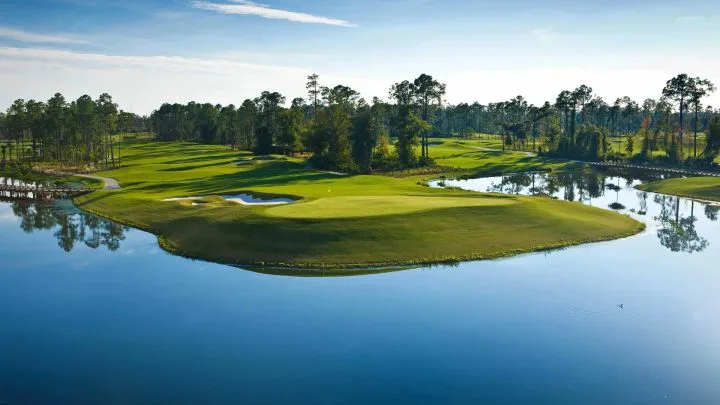Why we care
Terrestrial liming, or the addition of a basic (alkaline) material like calcium carbonate to crops and lawns is a common agricultural soil treatment. When applied on land in the coastal zone, this alkalinity likely influences neighboring bodies of water and may foster carbon dioxide removal and mitigate local ocean acidification. This project will study the effectiveness of carbon dioxide removal and impacts of resulting alkalinity from the common practice of terrestrial liming in a coastal setting.
What we will do
Dr. Jaime Palter of the University of Rhode Island says “a golf course’s routine lawn care includes the spreading of large quantities of limestone – nearly 20 tons for 9 holes. With that fact in mind, we realized that using a golf course’s lime deployment as our release experiment could provide an ideal, permit-free opportunity to study the effect of coastal alkalinity enhancement”. This project takes advantage of a routine lawn care technique of golf course liming. The team will monitor the carbon chemistry of a small coastal lagoon before and after the application of the limestone on a nearby golf course. The team will measure dissolved inorganic carbon, or the total amount of inorganic carbon in the water using sensors continuously measuring water properties and in weekly field sampling. They will also measure total alkalinity, the water’s buffering capacity that may increase with liming and enhance the lagoon’s ability to take in carbon dioxide. These essential observations help track the sources and sinks of carbon in a system. More specifically, they will allow the team to calculate the balance of dissolved inorganic carbon and total alkalinity in the lagoon to understand if the lagoon can further absorb carbon after the liming process. The research will also study the impact on the ecosystem and mitigation of local ocean acidification on clams. Finally, the project employs modeling simulations to understand the fate of alkalinity and dissolved inorganic carbon as it leaves the coastal zone, estimate the carbon dioxide removal achieved through observed lime application, and explore the scalability of terrestrial liming along the U.S. east coast.
Benefits of our work
The work aims to address the unknowns associated with the practice of coastal liming as a carbon dioxide removal pathway. Specifically, the team will learn more about “how this coastal liming could mitigate local acidification, promote measurable carbon dioxide removal in the coastal zone, or export alkalinity to the open ocean, and how these practices might scale along the US East Coast” says Palter. Furthermore, the work also evaluates impacts on shellfish using this approach.
Award amount: $1,538,452
IRA funding? Yes
Funding source(s): NOAA
Project duration: 3 years
Investigators
Jaime Palter, University of Rhode Island
Jason Grear, Environmental Protection Agency
David Ho, University of Hawai’i, Manoa
Robert Pockalny, University of Rhode Island
Rebecca Robinson, University of Rhode Island
Samantha Siedlecki, University of Connecticut
Hongjie Wang, University of Rhode Island
Image: Terrestrial liming at golf courses serve as testbeds for this method for carbon dioxide removal and mitigating acidification. Credit: Your Golf Travel (Creative Commons)



